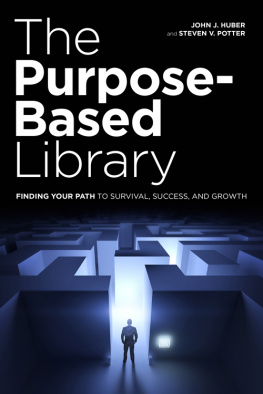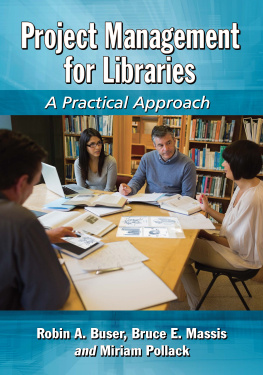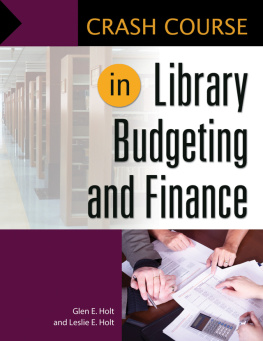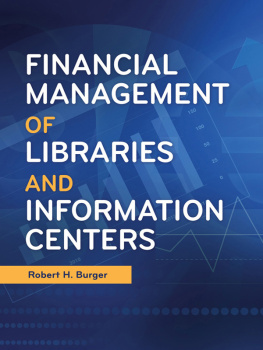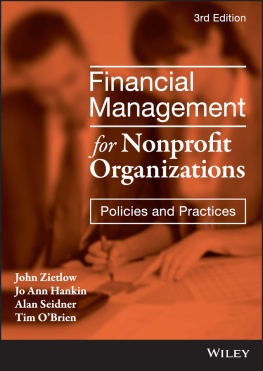
ALA Neal-Schuman purchases fund advocacy, awareness, and accreditation programs for library professionals worldwide.
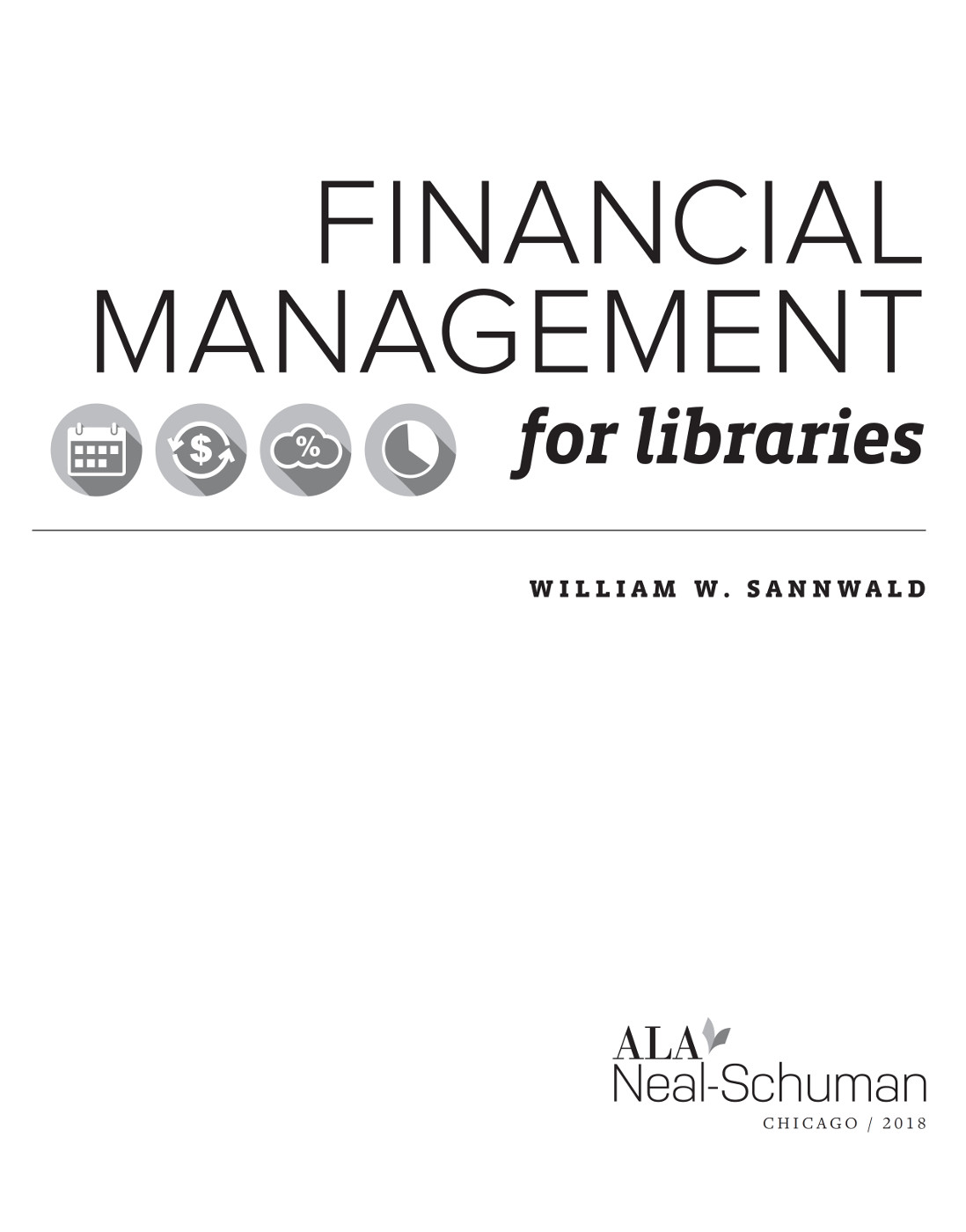
WILLIAM W. SANNWALD was assistant to the city manager and manager of library design and development for San Diego from 1997 to 2004, and served as the city librarian of the San Diego Public Library from 1979 to 1997. He is now a full-time faculty member in the business school at San Diego State University, where he teaches senior and MBA classes in management. Sannwald has been selected five times by students as the most influential professor and in 2018 his faculty colleagues selected him for a teaching excellence award. He also works as a library building and administrative consultant. He is the author of numerous books and articles on library architecture and management and has presented papers at national and international conferences. A past president of the Library Administration and Management Association (LAMA), Sannwald was twice a jury member of the joint American Library Association/American Institute of Architecture awards. He is the recipient of the San Diego AIA chapters highest honor, the Irving Gill Award, for his contributions to library architecture.
2018 by the American Library Association
Extensive effort has gone into ensuring the reliability of the information in this book; however, the publisher makes no warranty, express or implied, with respect to the material contained herein.
ISBNs
978-0-8389-1560-8 (paper)
978-0-8389-1677-3 (PDF)
978-0-8389-1676-6 (ePub)
978-0-8389-1678-0 (Kindle)
Library of Congress Cataloging in Publication Control Number: 2017052250
Cover design by Alejandra Diaz. Images Adobe Stock, Inc.
Contents
Tables
Figure
Exhibits
This book had its genesis in one of the regional workshops that I conducted for the Library Leadership and Management Association (LLAMA). When LLAMA offered regional workshops throughout the United States, I led one- or two-day sessions in planning library buildings, including new construction, facility improvements, and remodeling and renovations; management; marketing; and budgeting. These regional workshops were great because of the many wonderful people I met and worked with throughout the country. When I submitted the manuscript for the sixth edition of my Checklist of Library Building Considerations, Rachel Chance, an acquisitions editor for ALA, asked me to write a book about library finance based on these LLAMA budgeting workshops. Researching and writing this book was a delight, and I hope that it is a contribution to the profession.
There are many people to thank for their contributions to this book. I would like to start with the three libraries I used as case studies to illustrate the finance and budgeting techniques described in the book.
The San Diego State University (SDSU) library was a natural choice because I have been teaching part time and full time in the universitys business school for thirty years. Two people at the library, Dean Gale Etschmaier, and Sallee Spearman, the director of budget and fiscal operations, graciously provided information about the universitys budget planning. I was especially interested in the interrelationship of individual universities in the California State University System and the chancellors office, which has budget oversight. Individual universities in the system have a great deal of budgetary freedom in some situations and considerable centralized control in others. Through the budget process, Dean Etschmaier has been able to align the work and goals of the library with those of the campus, by bringing together library stakeholders such as academics, student services, and business services to create the universitys budget. Both Dean Etschmaier and Ms. Spearman helped me understand the complex nature of juggling all the stakeholders when creating a final university budget. Dean Etchmaier reports to the SDSU provost.
Stephanie Sarnoff, the executive director of the Schaumburg (Illinois) Township District Library (STDL), shared the librarys extensive financial records, many of which are exhibited in this book to illustrate budget concepts. The STDL was selected because the library has its own taxing authority, which is not common for most public libraries, which are usually part of a larger governmental organization. The librarys financial and operating records are very transparent. I thank Ms. Sarnoff for generously giving me access to her financial information and answering my many questions. After Ms. Sarnoff retired, Monica Harris, her successor as executive director, proved to be a great resource by providing permission to reproduce many of the librarys financial statements. The executive director reports to an administrative board.
The third library is the Chula Vista (California) Public Library (CVPL). I met with Betty Waznis, the librarys director, to discuss the concept for the book a couple of weeks after I was assigned to write it. The CVPL is a department of the City of Chula Vista, a fast-growing medium-sized city very close to the Mexican border in southern San Diego County. The library has a lower level of financial support than Schaumburg, but has extensive community support and provides an excellent level of service to residents. The library is part of the city administration. Ms. Waznis reports to the city manager.
A few other people provided information that I have included in the book. Eva Poole, the director of the Virginia Beach Public Library (VBPL), provided material about her award-winning joint-use community college-public library building. Gordon Carrier, the design architect for the VBPL, sent me budget information about the project. Alexia Hudson-Ward, the director of the Oberlin College Library, provided material regarding the budget process in a private college library. My longtime LLAMA colleague, Larry T. Nix, enlightened me about how community funding of public libraries got started and spread in the USA.
I would like to thank some colleagues in the Fowler College of Business Administration at SDSU. Professor Janie Chang of the Charles W. Lamden School of Accountancy provided materials and advice that helped me better understand accounting. Professor Mehdi Salehizadeh, chair of the finance department, answered many questions about financial concepts and techniques. My management department chair, Lawrence Rhyne, supported my work on the book.
A special thanks to ALAs Rachel Chance, who acted as a muse for this book.
I would appreciate any comments or suggestions readers might have concerning financial management for libraries and please e-mail them to me. This book is a living concept, and I will keep your ideas for inclusion in future work.
William W. Sannwald
Introduction to Budgeting and Strategic Planning
Understand what a budget is
Understand the advantages to the organization of having a budget
Illustrate how the librarys budget is the outcome of its strategic planning process
Explain the purposes of strategic planning
List the types of budgets that may be used in libraries
Review the way that budgets are developed
Determine the accounting and financial tools required to prepare and analyze budgets
Discuss the participants and procedures involved in the budget development process
T his book is written for at least two audiences. The first group comprises students in library and information science programs who must acquire the information, skills, and abilities required to become functioning professionals in a rapidly changing environment. They will be entering a world where information is the key to success, and will serve as gatekeepers and disseminators of information. To maximize their information skills, they must be proficient in allocating and controlling scarce resources and the budgetary and financial skills required to determine priorities about where to allocate resources.
Next page


